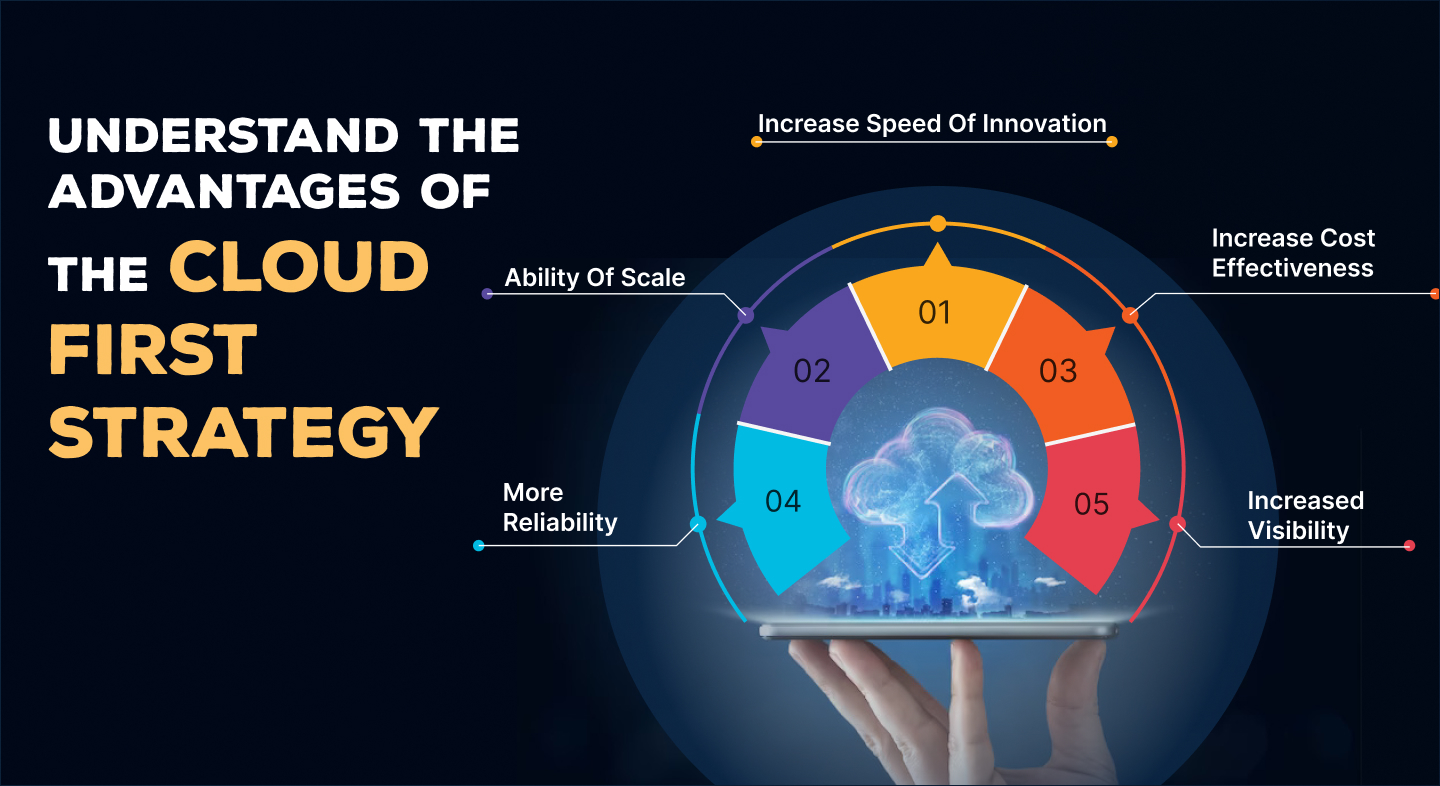Cloud-first strategy is a practice that involves building all new applications for the cloud, and then migrating older applications to the cloud. This strategy is focused on leveraging the benefits of the cloud, such as scalability, reliability, and flexibility. It’s important to note that cloud-first strategies are not one size fits all; they can be tailored to meet your company’s specific needs and goals.
Implementing a cloud-first strategy can help you unlock the potential of digital transformation and deliver customer experience. In this article, we will cover the basics of cloud-first strategy and its benefits to your business. Dive in to learn more about this valuable approach.
Benefits of Cloud-First Strategy
The cloud-first strategy has been gaining a lot of traction in recent years, and for good reason. This strategy can provide several benefits for businesses, including increased agility, scalability, and cost savings.
- One of the biggest benefits of a cloud-first strategy is increased agility. When all of your business applications and data are stored in the cloud, it’s much easier to make changes and updates on the fly. This can be a major advantage when you need to rapidly respond to market changes or take advantage of new opportunities.
- A cloud-first strategy can also help you scale your business more easily. Because the cloud is highly scalable, you can simply add more capacity as needed without having to invest in new hardware or infrastructure. This can be a major cost saving compared to traditional on-premises systems.
- Finally, a cloud-first strategy can help you save money on IT costs in general. With no need to maintain on-premises hardware or software, you can reduce your overall IT spending significantly. In addition, many cloud providers offer pay-as-you-go pricing models that can further reduce your costs.
How to Implement a Cloud-First Strategy?
- A cloud-first strategy is a business and technology framework that emphasizes the use of cloud computing resources over on-premises infrastructure.
- The goal of a cloud-first strategy is to enable organizations to be more agile, efficient, and innovative by taking advantage of the benefits of cloud computing, such as scalability, flexibility, and pay-as-you-go pricing.
- To implement a cloud-first strategy, organizations need to assess their current IT landscape and identify which workloads are best suited for the cloud. They also need to develop a roadmap for migrating workloads to the cloud and ensure that their staff has the skills needed to support a hybrid IT environment.
- Once implemented, a cloud-first strategy can help organizations become more agile, responsive, and competitive. This strategy will lead to increased efficiency and cost savings.
Best Practices for Creating a Successful Cloud-First Strategy
A cloud-first strategy is a business and IT transformation approach that prioritizes the use of cloud resources and services over on-premises or traditional IT solutions. The goal of a cloud-first strategy is to enable an organization to be more agile, responsive, and efficient by taking advantage of the many benefits of cloud computing, such as scalability, flexibility, and cost savings.
When crafting a cloud-first strategy, there are a few best practices to keep in mind to create a successful transformation:
1. Define your goals and objectives. What are your objectives for transitioning to the cloud? What particular difficulties are you aiming to resolve? Having a clear understanding of your goals will help you formulate a plan that will deliver results.
2. Develop a roadmap. Once you know what you want to achieve, you can start mapping out how you’ll get there. Your roadmap should take into account your current state, target state, timeline, budget, risks, and dependencies. This will ensure that your transition is well-planned and executed smoothly.
3. Build buy-in from key stakeholders. Getting executive sponsorship and buy-in from key decision-makers is critical for any type of transformation project. Make sure to engage with stakeholders early on in the process so that they understand the value proposition of going cloud-first and can provide their support throughout the journey.
4. Assess your readiness for the cloud. Not all workload
Summary
Cloud-first strategy is an important step for any business looking to improve its efficiency and productivity. It can help companies create a secure, reliable, cost-effective IT environment that allows them to take advantage of new opportunities quickly and easily. By understanding the benefits of cloud computing and taking steps to implement a cloud-first strategy, businesses can become more agile, simplify processes, and create competitive advantages. Ultimately, this will help them stay ahead in their respective industries and remain competitive in today’s fast-paced market.

